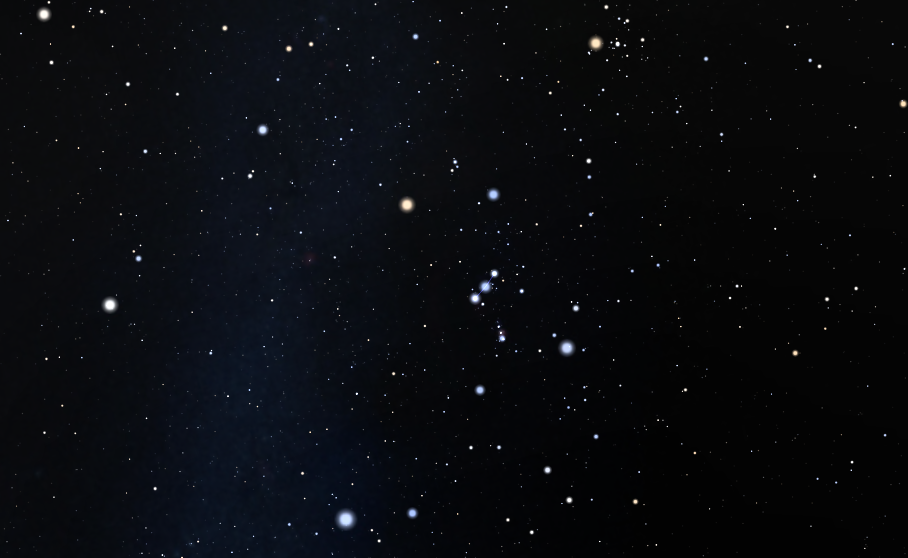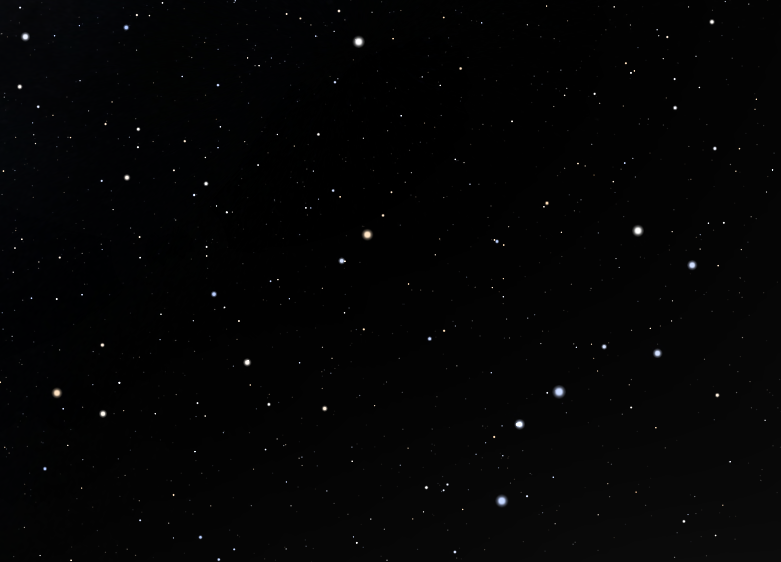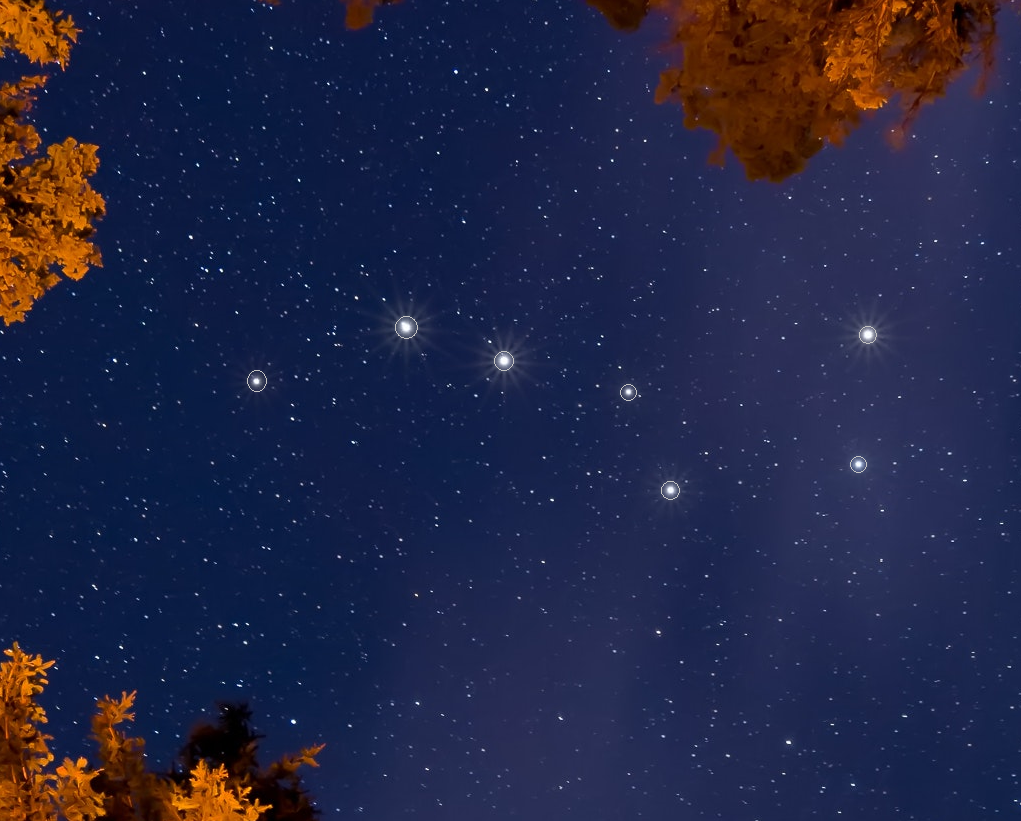Defining Astronomy
Astronomy comes from the Greek word astronomos. It is a combination of the words astron, (star) and nomos (arranging, regulating; rule, law). When we are studying astronomy, we are studying nature’s laws.
“If you study the constellations, you are really studying a culture.” Jim Mihal
A constellation is really just a name for one way to organize and label the patterns of stars we see in the night sky. Every culture has its own way of organizing and labeling the stars. What a culture considers important enough to remember is based on where they live and how they live.
The predominant culture based their study of astronomy on the oral traditions of Ancient Greece. An oral tradition is a mnemonic device. A mnemonic device aids in recalling larger pieces of information. Mnemonic techniques include images (called iconic) and sound (called echoic). Iconic devices include diagrams, drawings, maps, mental images, models, photos, physical locations, and symbols. Echoic devices include words and patterns. Storytelling, oral traditions, rhyming, repetitive phrasing, alliteration, and meter (the rhythm of syllables in a verse or stanza of a poem) focus on words. Drumming, rhythmic strumming of a musical instrument, regular variations in intonation are sound cues that aid recall memory. Songs combine words and sound cues.
Organization and attention to critical items are strategies used to aid memory. When visual and verbal cues are paired recall and recognition are enhanced. Pairing the oral traditions with the visual image of a group of stars can help people remember the patterns of stars in a constellation.
Three principles are combined in powerful mnemonic systems:
- Association,
- Imagination, and
- Location
Association links the thing you want to remember with a way to remember it. Imagination uses associations to help retain memories and aid in effective recall later. The more creative the association, the easier it is to remember for a longer period of time. Location provides a structure to organize information and separate one mnemonic from another. (https://www.mindtools.com/memory.html)
Oral traditions use the principals of association, imagination, and location. A pattern of the stars was associated with a character or a thing. The stories were often exciting and imaginative. The locations of constellations near one another were often described in oral traditions that are related to one another.
Details in oral traditions can reinforce the rise and set patterns of stars. In Greek oral tradition, Orion the Hunter, kills the hare. The constellation of Hare is near the foot of the Orion constellation. Hare is the first to rise and the first to set so it looks like Orion killed the Hare. The constellation or Canis Major is Orion’s faithful hound, Sirius. Sirius is the brightest star in Canis Major. Sirius is also known as the dog star. Canis Major rises after the Orion and appears to follow the hunter after the constellation of Orion sets.

On Turtle Island, several tribes have oral traditions using many of the stars found in and around Orion. The Lakota/Nakota/Dakota people recognize Nape (the Hand) and Zuzeca (the Snake). The Ininew recognize Mistapew (a Giant). The Ojibwe recognize the constellation, Biboonkeonini (Wintermaker).
The North Star
Cultures across the northern hemisphere hold oral traditions that describe the stars that rotate around a single pole star. A pole star is a single star that other stars rotate around. The scientific name for the pole star is Polaris. It is commonly known as the North Star. Many of the Great Plains nations recognized Wicanhpi Owanjila as the pole star. To the Ininew, Keewatin is known as the Going Home Star.

Question:
- Does your culture recognize a pole star?
Finding North

Before cell phones and global positioning satellites (GPS), cartographers oriented their maps to magnetic north. Magnetic North is not a fixed point. It moves over time depending upon the activity of the molten metal inside Earth’s core. Changes are recorded and adjustments to navigation tools need to be made over time.
People living on Turtle Island oriented themselves to True North. Astronomical True North is based on Earth’s relationship with the stars. The changes that happen to True North occur much slower than changes to Magnetic North. Generally, visible changes to True North take thousands of years and would not be noticeable over the course of a person’s lifetime. However, after a major earthquake in 2011, the Inuit people reported their view of the circumpolar stars changed.
Activity: Which Way is North?
- Using a compass, identify which direction is north.
- Label the general direction of north.
- Show and describe the following using Circumpolar Stars PowerPoint, Stellarium, and/or H. A. Rey-style umbrella:
- Counterclockwise advance of circumpolar stars approximately 1/12 of circle to indicate hourly advance of the stars
- If students are familiar with a circular clock face, ask them to compare the rotation of the stars with the hour hand, if not, demonstrate how a clock face shows the advance of time
- Compare hourly rotation to monthly rotation
- Show and describe seasonal changes to the Little Dipper/Ursa Minor constellation (Spring pouring water out, Fall/Autumn filling up, Winter to the right of Polaris, and Summer to the right of Polaris)
- Show and describe changes in the visible circumpolar stars based on latitude
(If using the downloaded version of Stellarium turn on the Azimuthal Grid)
(If using umbrella, describe how the degree of latitude compares directly to the angle between the location of the observer and point of circumpolar rotation overhead)
- Have learners complete Big Dipper worksheet (May be included as part of observation log if desired)
- Have learners describe changes in the visible circumpolar stars based on latitude
Astronomy – Declaring natural laws that regulate the stars
Earth’s rotation makes the sun and the stars appear to move across the sky. When we look North, the stars appear to circle around the celestial north pole. Knowing how to locate True North was important to the people who laid out the mounds and the petroforms.
The setting sun can help you find the general direction of north. When you look at the sunset, you are facing west. If you held both arms straight out at your sides like you’d look like the letter “T”. Your right arm would be pointing roughly north.
If you viewed the night sky over the course of an evening, you would see changes in the position of the stars. The circumpolar stars rotate around the celestial north pole. They move counterclockwise: up from the east side to the north and down from the west side to the south. The stars around the celestial equator are half-way between the north and south celestial poles. They appear to rise in the east and move in a clockwise direction from east to west before they appear to set in the west. The circumpolar stars near the celestial south pole rotate clockwise.
You can use direct observation to:
- observe the apparent motion of stars
- determine points on the horizon that correspond to the rising and setting points of different stars
- locate True North
Question:
- How do you think you could accurately locate True North?
- How would you define it?
- How would you find it when the stars are not visible?
